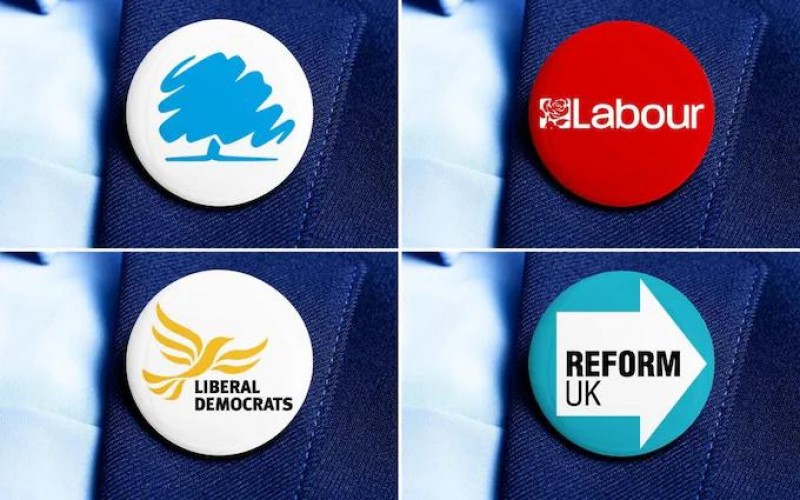
As we gear up for the 2024 General Election, each major party in the UK has laid out its manifesto, promising everything from tax cuts to green investments. But how will these policies affect property prices and inflation? Here’s a closer look at the economic implications of the Conservative, Labour, Liberal Democrat, and Reform Party manifestos. And because financial analysis doesn't always have to be dry, let’s sprinkle in a bit of humour along the way.
Conservative Party
Property Prices The Conservatives’ focus on tax cuts and support for small businesses is designed to spur economic growth. With more money in consumers' pockets and a robust environment for entrepreneurs, we can expect increased demand in the housing market. This could lead to a slight uptick in property prices, especially in high-demand areas. Think of it as adding a dash of hot sauce to your housing market – a little extra kick that might make things sizzle.
Interest Rates and Inflation However, tax cuts coupled with increased public spending on healthcare and education may push government borrowing higher. If this leads to concerns about rising debt levels, the Bank of England might raise interest rates to curb inflation. It’s like borrowing your neighbour's lawnmower; the more you borrow, the more they might start charging interest – and no one likes paying more for the same old mow.
Labour Party
Property Prices Labour’s ambitious plans for substantial investments in infrastructure, green technology, and public services are likely to boost overall economic activity. This injection of funds can stimulate job creation and increase disposable incomes, potentially driving up property prices. Imagine the housing market on a health kick, fueled by a diet of government investments – it’s bound to bulk up.
Interest Rates and Inflation To fund these initiatives, Labour plans to increase taxes on corporations and the wealthy. While this could cool down some segments of the market, the overall impact on inflation could be moderated by the balanced approach to funding their spending. Nevertheless, the scale of their investments might still prompt the Bank of England to keep a close eye on inflationary pressures, possibly leading to a cautious rise in interest rates. It’s like a fine wine; good in moderation but too much and you might feel the pinch the next morning.
Liberal Democrats
Property Prices The Liberal Democrats propose a balanced approach with moderate spending increases targeted at healthcare, education, and environmental initiatives. By focusing on these key areas, they aim to provide stability and sustainable growth in the housing market. Their policies are likely to keep property prices stable or see them increase gradually. Picture the housing market on a leisurely bike ride – steady, sustainable, and with fewer unexpected bumps.
Interest Rates and Inflation Their fiscal prudence suggests that they would be cautious about significant borrowing, likely keeping inflation in check. This approach should mean relatively stable interest rates, giving homeowners and buyers peace of mind. It’s akin to having a reliable GPS – it may not take you on the fastest route, but it’ll avoid the traffic jams and keep you on course.
Reform Party
Property Prices The Reform Party’s emphasis on reducing taxes and government spending aims to stimulate economic growth from a different angle. However, their aggressive cuts could result in slower public sector growth, potentially leading to uncertain impacts on property prices. The housing market under their policies could be like a rollercoaster – thrilling for some, but stomach-churning for others.
Interest Rates and Inflation Significant reductions in government spending might lower borrowing needs, which could reduce upward pressure on interest rates. If successful, this could lead to lower inflation and stable or reduced interest rates. However, the flip side is the potential for reduced public services and infrastructure, which might not bode well for long-term economic stability. Think of it as a tightrope walk; balanced well, it’s impressive, but a misstep could be costly.
Conclusion
Each party's policies come with their unique blend of risks and rewards for the housing market and the broader economy. The Conservatives aim for growth through tax cuts, Labour through public investment, the Liberal Democrats through balanced spending, and the Reform Party through fiscal austerity. As voters, homeowners, and potential buyers, it’s crucial to weigh these impacts carefully. After all, the property market is like a garden – it thrives on careful planning, balanced inputs, and the occasional splash of humour to keep things lively.
